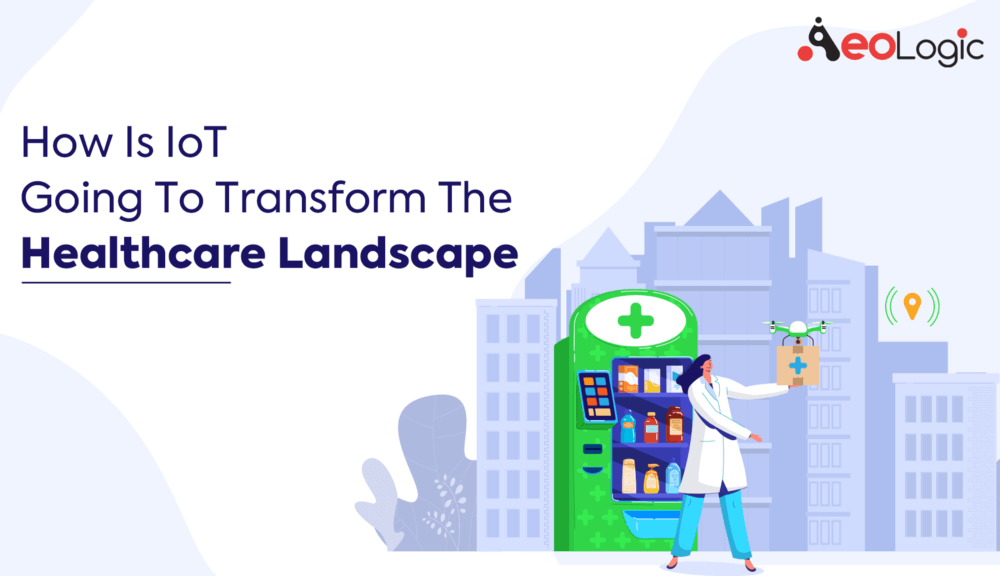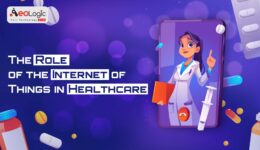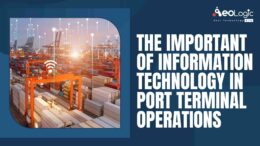When we talk about healthcare, the first thing you visualize is hospitals and medical practitioners. A lot has been made possible in the field due to the availability of IoT devices.
Traditionally as well, doctors always used to rely on a variety of investigations to diagnose a patient’s symptoms before prescribing medicines. Today, with the advancement of IoT, a lot of these parameters can be monitored in real-time and can significantly aid patient rehab and recovery. In the healthcare space of hospitals and medical practitioners, service providers, who can analyze data captured from smart IoT devices and report inferences are making rapid strides. The efficiency and accuracy gained through the implementation of smart technology in the healthcare industry could be, in literal terms, lifesaving.
Let’s talk about why we should care about IoT
Out of everything we know about this technology, we know this one thing that it’s widely spreading at a very fast pace. IoT creates a web or mesh of interconnected devices that can easily be controlled by giving commands. These devices may include vehicles, home appliances, and others embedded with electronics, software, sensors, actuators, and connectivity which enables these things to connect, collect, and exchange data. The usage and applications of IoT are not limited to leisurely purposes, but it’s playing a huge role in reshaping the way we mere humans look at this world. Particularly in the medical sector, the Internet of Medical Things (IoMT) is on the rise to making efforts to change people’s mindset on how they look at their health and how they take care of it.
Not just that, according to a recent survey, in this decade, there is going to be an investment of near $ 6 trillion on IoT out of which at least $ 3 trillion is expected to be invested in the health care industry for IoT.
Ways IoT Is Already Changing The Healthcare Landscape
Remote Patient Monitoring
Remote patient monitoring is not just limited to Fitbits and smart bands. Although, wearable health devices bring out healthy habits and health awareness to a user’s daily trends. IoT offers a wide range and variety of wearable devices and bio-sensors that provide patterns crucial to a patient’s health.
The remote monitoring solution facilitates the patients to receive monitoring and treatment in private or in a remote surrounding instead of hospitals. This eventually reduces the workload of healthcare workers who are trying to cope with an increased patient count.
One of the biggest examples of a remote patient monitoring device is Continous Glucose Monitors (CGM). CGM tracks the blood sugar level of the patient day and night. It helps to detect trends and patterns that give the doctor a detailed picture.
Hospital Operation Management
With the increase in population on earth, the number of chronic illnesses continues to increase, it’s the most important to improve the hospital operation management so that the health professionals can focus on treating patients and not get overwhelmed with paperwork. IoT solutions can automate several operations through a centralized database management system.
RFID (Radio Frequency identification) or transponders are one of the ways IoT is improving hospital operation management. RFID tags are small devices that use low power radio waves to receive, store, and transmit data to nearby readers. RFID enables more accurate inventory tracking for medicine and pharmaceuticals, patient and staff tracking, and tool tracking in the surgical setting. The application of RFID tags enables hospitals to streamline time-consuming processes and improve communication.
Electronic Health Records(EHR) is another way IoT has simplified the management of hospital operations. A study shows that for every hour of face-to-face time with patients, physicians spend nearly two additional hours on clerical tasks. IoT has already revolutionized the way the patient’s information is managed from the time it is collected to when it is processed and shared within a facility or to other locations.
Challenges Faced By Healthcare in Digitizing
IoT is slowly allowing for the health care industry to reduce its dependency on humans. Even though IoT medical devices may not always impress the everyday consumer, they are steadily improving health care and providing early diagnosis and treatment of serious issues. Having said that though, there are quite a few IoT health care challenges that application developers have to overcome, which include:
Health Care Privacy
Security is important for the IoT industry as a whole, but it’s even more important when you add in patient privacy. The regulations that medical apps need to uphold make innovation in the IoT medical device field a challenge. HIPAA — the Health Insurance Portability and Accountability Act — sets the standard for protecting patient data that is created, received, maintained, or transmitted electronically. Privacy is always an issue with health records, but since we now have sensors automatically collecting and storing our medical data, security is even more critical. This means anyone creating an IoT medical device has to keep patient privacy as a top priority.
Cyber Security
Cyber-security is a major concern in every sector, and the health care industry is no different. In March 2016, for example, health care group MedStar was a victim in a ransomware attack that rendered their computer systems — and vital patient records — unusable. The company had to resort to using paper records until they could restore their systems.
All this to say, hospitals today are even more hesitant to put anything on their network that is not well-vetted — and since IoT medical devices are the frontier of connectivity and many new applications are hitting the marketplace regularly, they often aren’t well-vetted. But keep in mind that not all technology needs to be deployed within the IT network of a hospital.
What’s Next?
In the coming years, The Internet of Things will continue to gain traction across industries — healthcare and pharmaceuticals among them. From fitness trackers to smart thermostats, the general public is already seeing the value of IoT connectivity, paving the way for connected devices to permeate every aspect of our lives.
New standards, technologies, and techniques will emerge that will enable machines, customers, and businesses to communicate simply and effectively in a highly connected world. The business value of big data insights will continue to push IoT forward. And the medical industry, typically regulation-driven and technology averse, will soon see how IoT and connected health solutions can help close the gap — making care more accessible around the world, and improving the quality of life of those with chronic conditions.
Overall, It’s not tough to believe that the future sure is bright. Now, all we need to do is just be aware & wary of our own health and understand how we can make use of all the amazing technology that is out there at our disposal.






